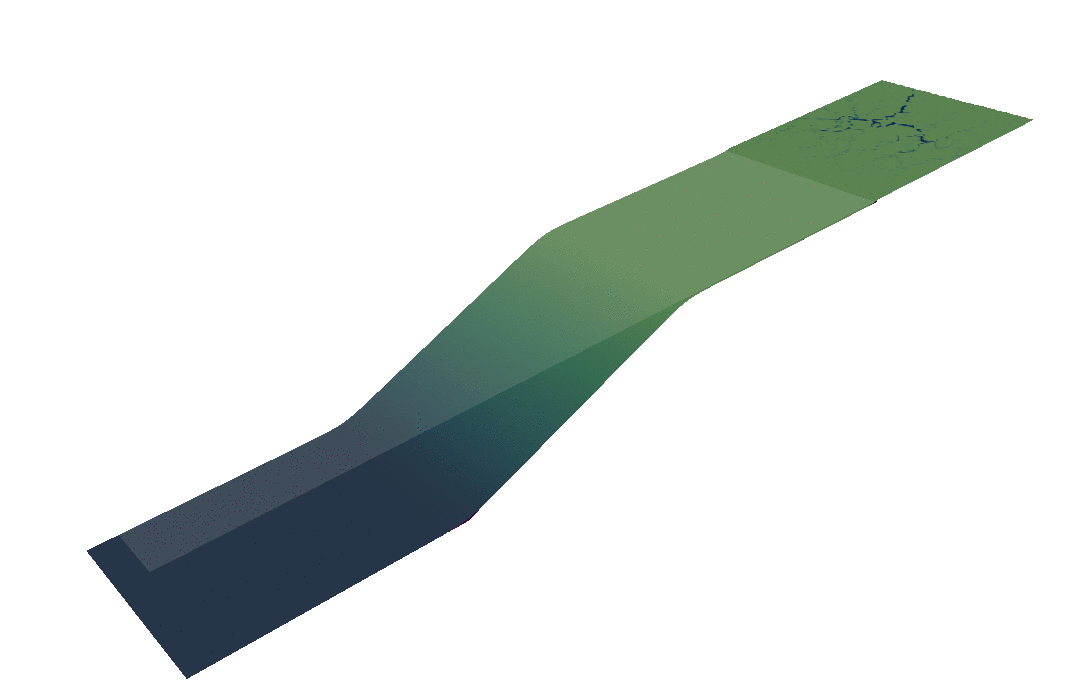WORK PACKAGES
A Work Package is dedicated to each of the scientific questions presented above to emphasize the pending scientific vision and expected results, and organize discussions and exchanges on a common scientific ground.
WP1 to WP3 focus on geological case examples chosen for their particular relevance for answering the S2S scientific questions posed.
WP2 and WP3 will have similar field/subsurface methodological approaches. WP4 dedicated to numerical modeling, is transverse from WP1 to WP3 and will interface with each.
WP1: “SLOW” - Understanding perennial S2S dynamics in response to long-term tectonic and climatic signals in deep time
The main objective of WP1 is to explore the effect of slow (>1 Ma) Earth’s surface deformation and/or climate variations (including weathering) on the S2S system, in two different tectonic settings (i) a setting dominated by mantle dynamics (ESR1 and ESR3) and (ii) a mountain building setting (ESR4). ESR1 (UR1) focuses on the effect of mantle dynamics on continental-scale (Africa) S2S systems. ESR2 (UIB) investigates in a sag basin the consequences of the major Permian-Triassic aridification on the S2S system of the Barents Sea. ESR3 (UIB) concentrates on the effect of mantle dynamics and the Iceland Plume on the Early Cenozoic S2S system of Norway. ESR4 (UB) quantifies sediment budget of a foreland basin, the Cenozoic South Pyrenean Basin. ESR5 (UBFC) tests the reality and effect of weathering under hot humid conditions in a time of mantle-controlled plateau uplift (South Africa).
WP2: “RAPID” - Understanding transient S2S dynamics in response to short-term signals and extreme events
WP2 is the counterpoint of WP1 exploring this time the effect of rapid climate variations (including weathering) on the S2S system. ESR6 (VuA) addresses the effect on the Rhine S2S system of the major global climate change, which occurred at the Middle Pliocene transition. ESR7 (UIO) quantifies the effect of cyclic Pleistocene climatic variations on marine sediment budgets at the border of a major ice sheet. ESR8 (Imperial) develops theoretical models of grain-size distribution in S2S systems in response to generic short perturbations. ESR 9 (UNIGE) tests the effects of an extreme short climatic event – the Paleocene-Eocene Thermal Maximum (PETM) – on the grain-size distribution over a whole sediment routing system (South Pyrenees). ESR10 (UNIGE) tests in this context the effect of the PETM on the weathering in the same place than ESR9. ESR11 (UR1) analyses the effect of short climatic events (Lower and Upper Aptian) on a whole S2S system (the Tunisian Margin) in two different long-term climatic settings.
WP3: IMPACT - Exploring relationships and feedbacks between human and S2S systems
WP3 in line with WP2 will concentrate on the effect of ultra-rapid human-induced perturbations on the S2S system. ESR12 (UNIBE) tests the effects of human managed drainage (including mining) on modern S2S systems in Swizerland. ESR13 (Imperial) focuses on human adaptation over large alluvial systems in India.

WP4 aims at further developing numerical tools to track grain size distributions during transport and deposition and to represent the formation of the regolith by weathering processes. Model development will be guided by observational constraints obtained in other WPs. The models will be then used to quantify rates, time scales and the behaviour of the various components of the S2S system. The ultimate goal of this WP is to develop and use numerical models of sediment production, transport and deposition to invert observations in order to obtain quantitative constraints on the amplitude and timing of forcing (both climatic and tectonic) and the value of model parameters that are inherently difficult to constrain directly from observations. This approach is novel and ideally suited for studying the S2S system and the signal propagation.



